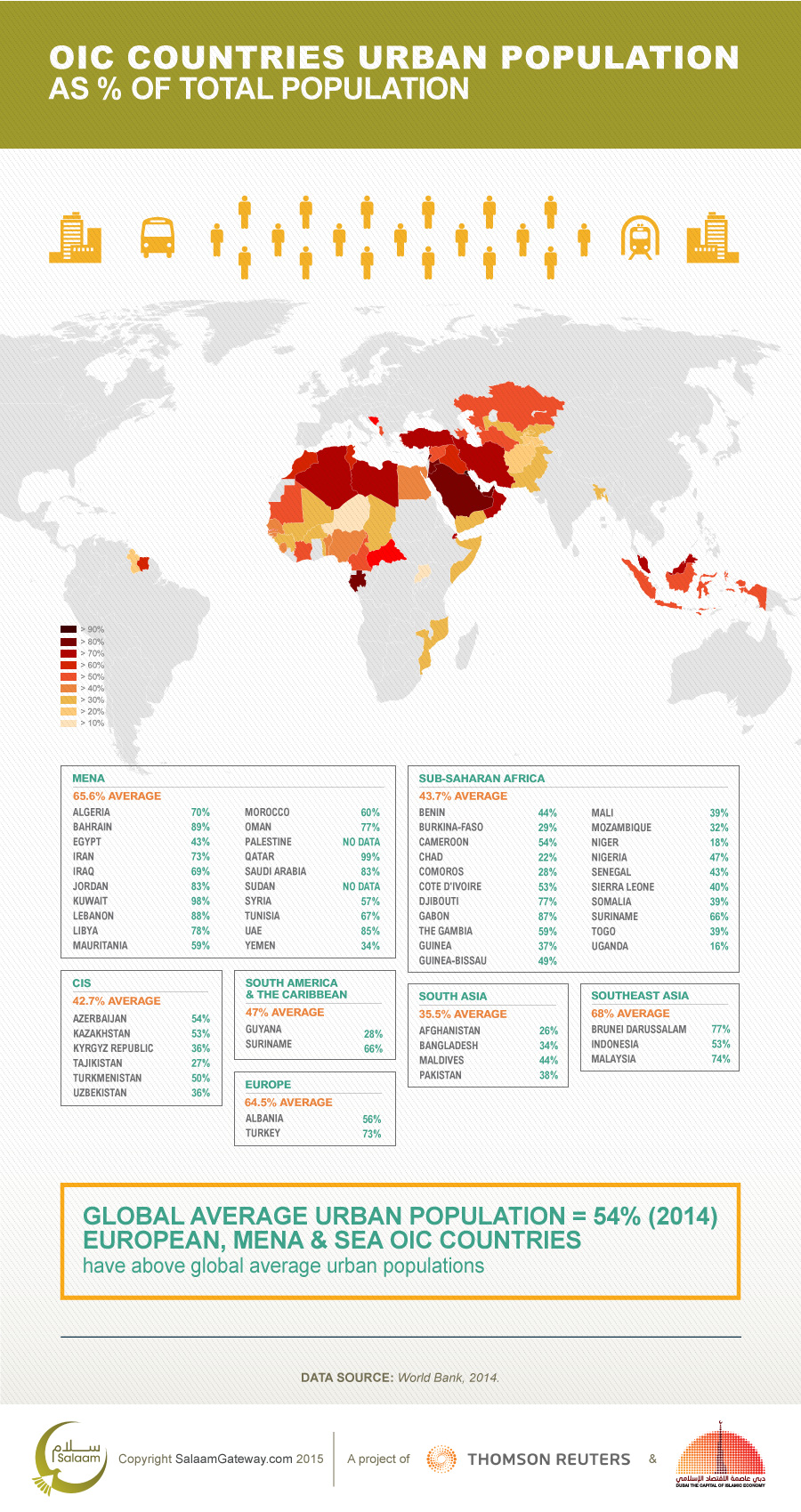European, MENA and Southeast Asian OIC countries have above global average urban populations
In 2014, the global average urban pooulation was 54 percent, according to the United Nations. The average for the entire OIC was 52.4 percent, which is just below the global average. However, OIC countries in three regions -- Europe, MENA and Southeast Asia -- have far bigger urban populations than the 54 percent global average.
The top three OIC countries with the highest urban populations in 2014 are GCC nations, whose significant development since the 1960s have been driven by petrodollars: Qatar (99 percent), Kuwait (98 percent), and Bahrain (89 percent). They are followed by Lebanon (88 percent), Gabon (87 percent), and UAE (85 percent). Saudi Arabia is not far behind on 83 percent.
Urbanisation brings with it new sets of needs and challenges. Increasing urban populations put a strain on resources, including rising demand and competition for energy, water, transportation, education and health services, as well as disaster management.
In addressing the issues OIC countries are facing from rapid urbanisation, the Organisation of Islamic Cooperation (OIC) address several aspects:
1. The well-being of "megacities", which are defined as those with populations of at least 10 million. The OIC's latest study surrounding megacities involve transportation challenges, and the report is available from here.
2. Disaster management -- the latest report is available from here.
